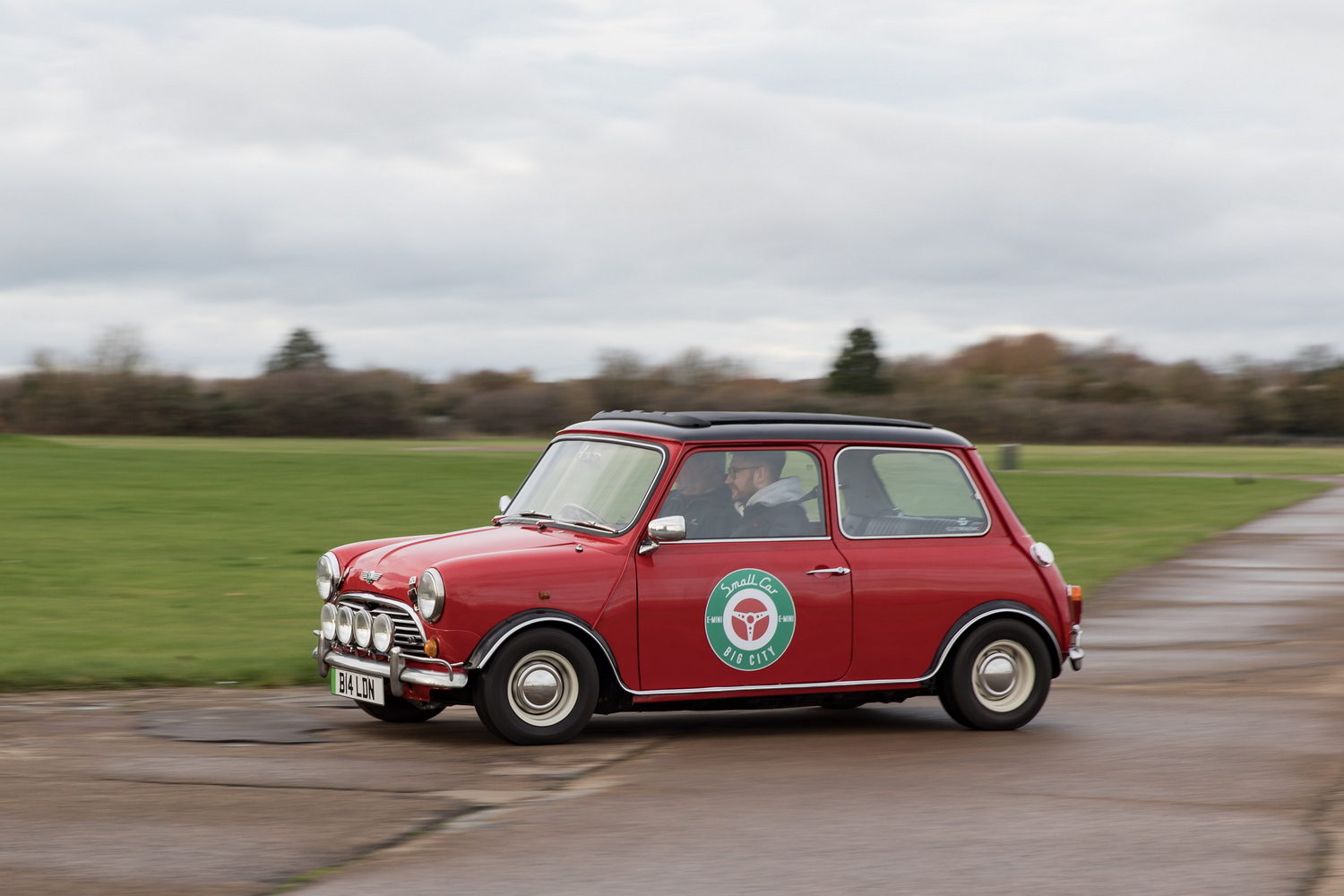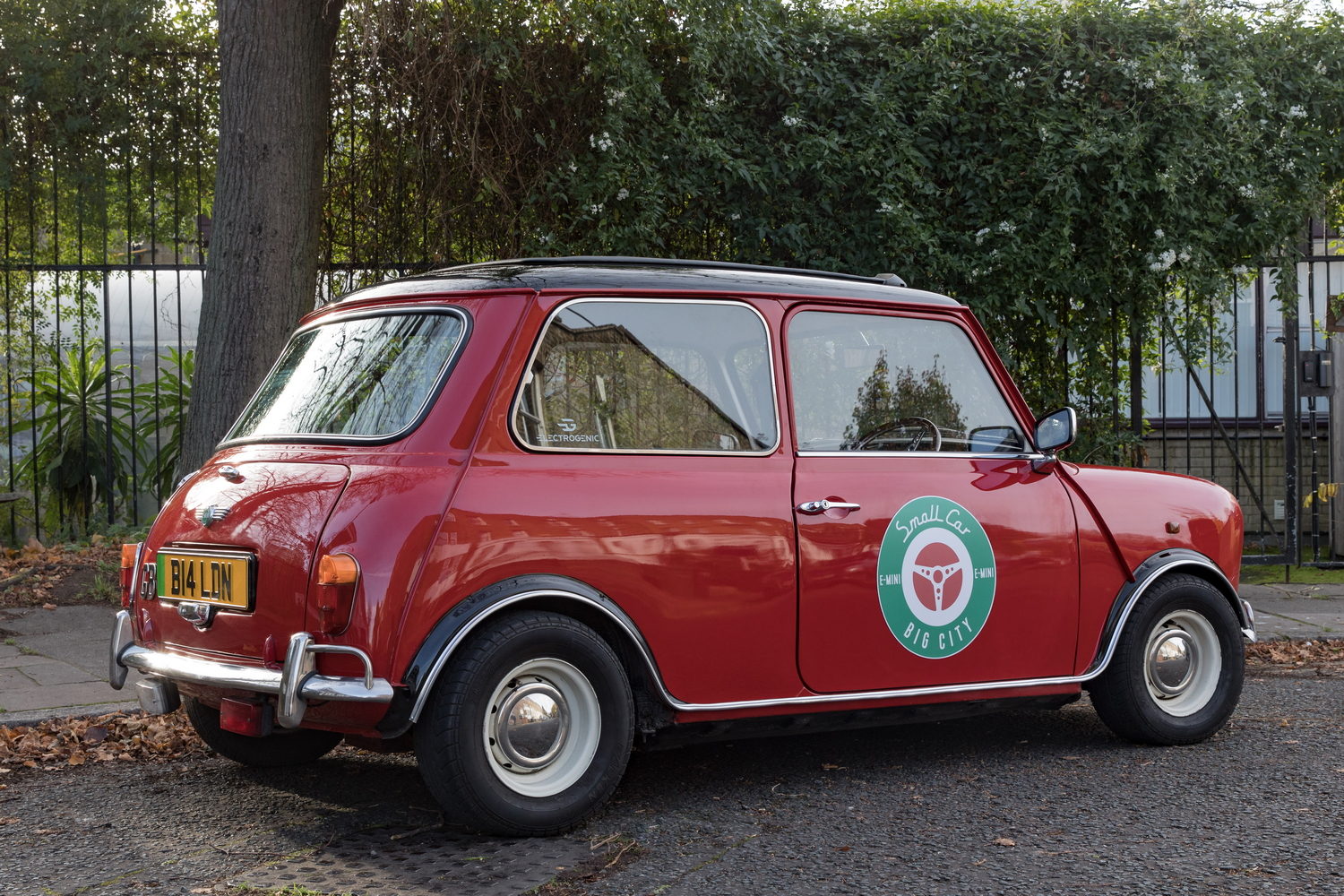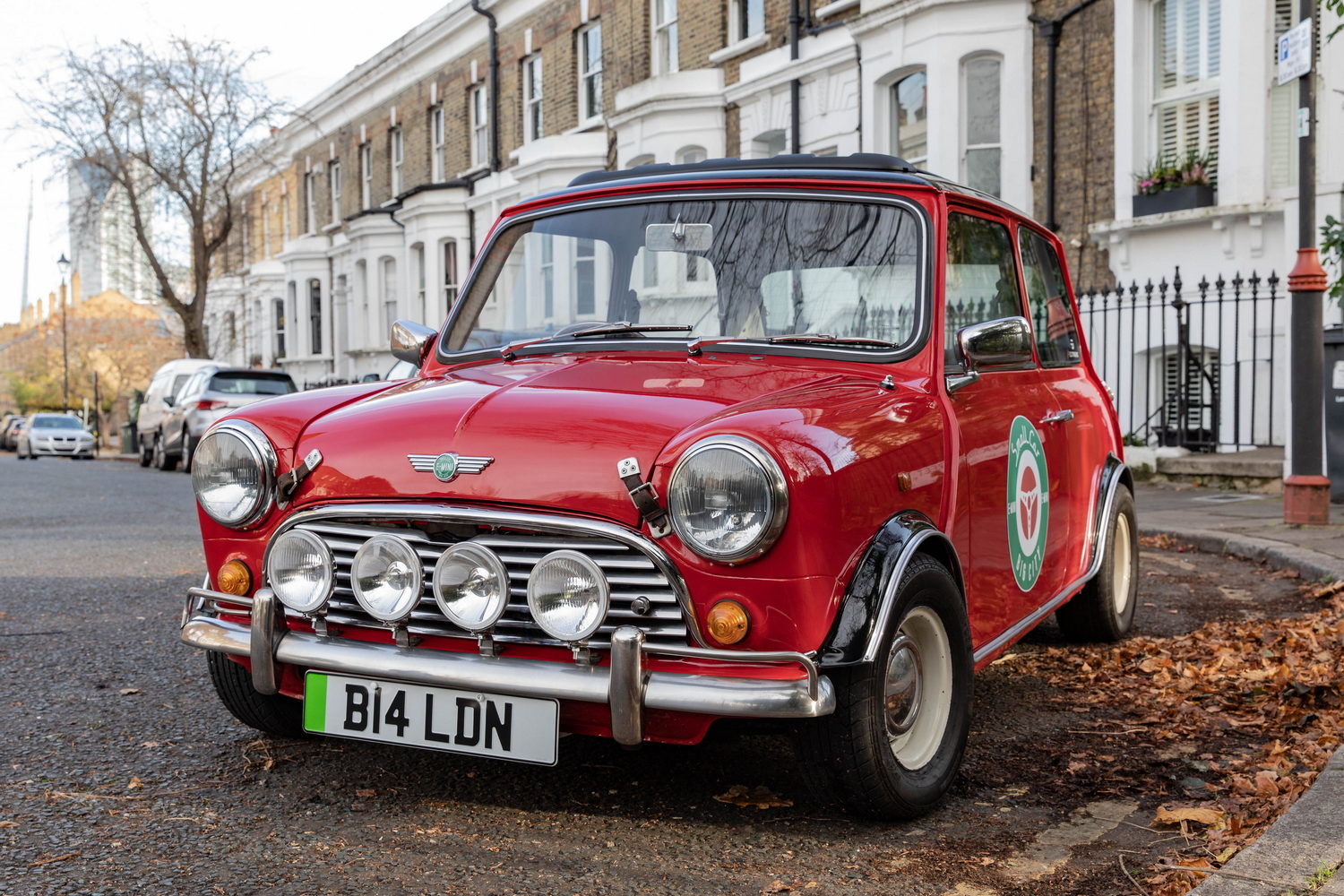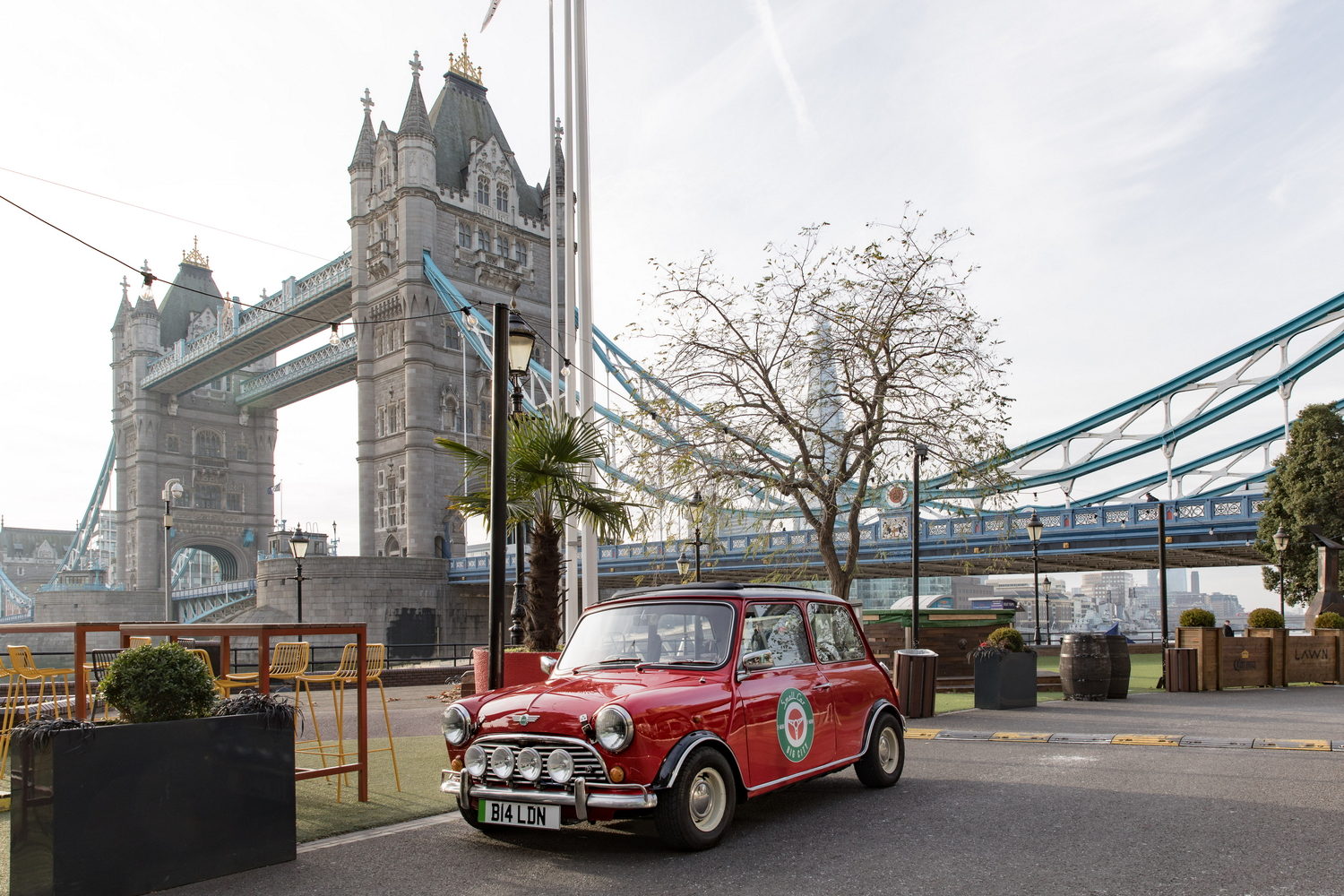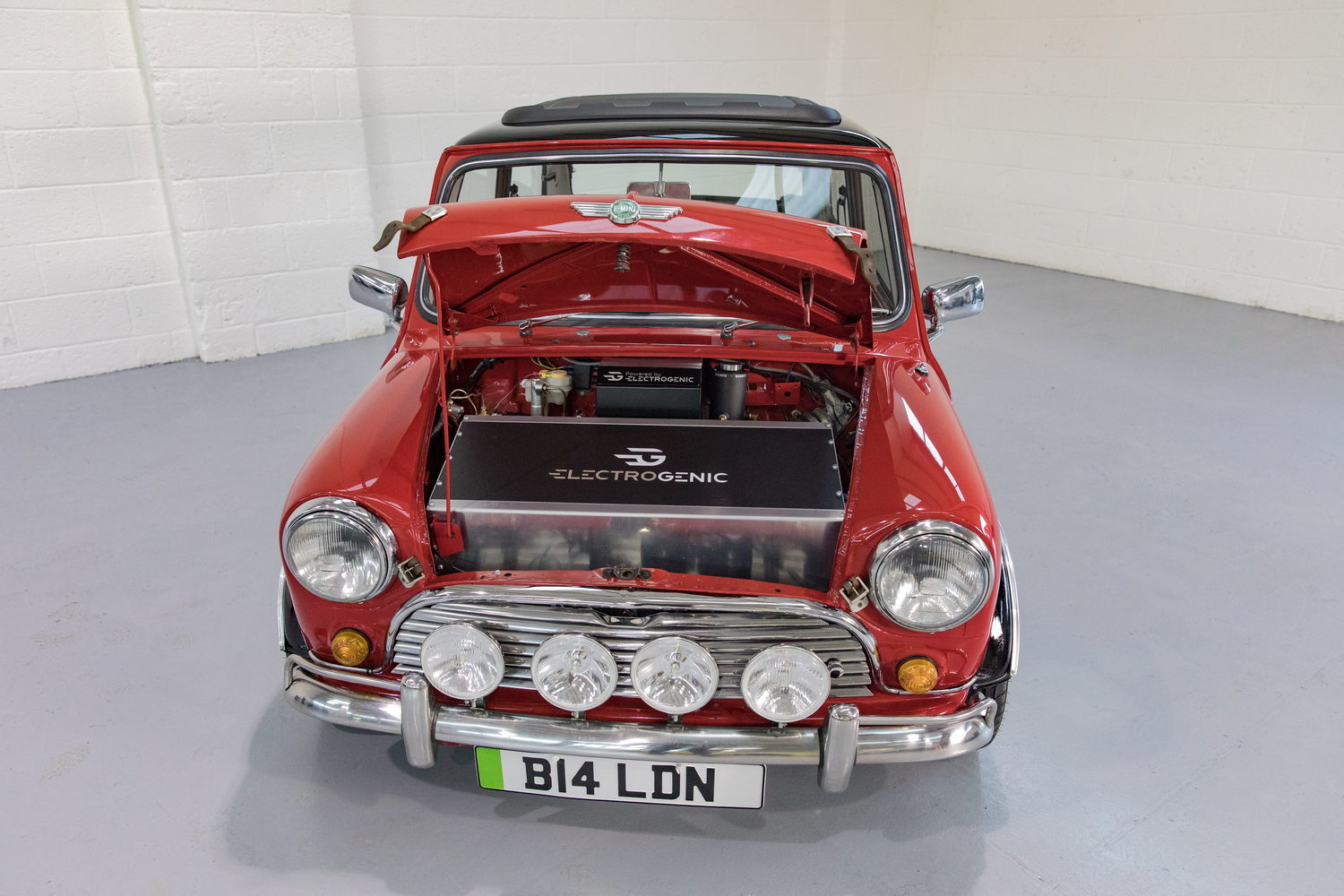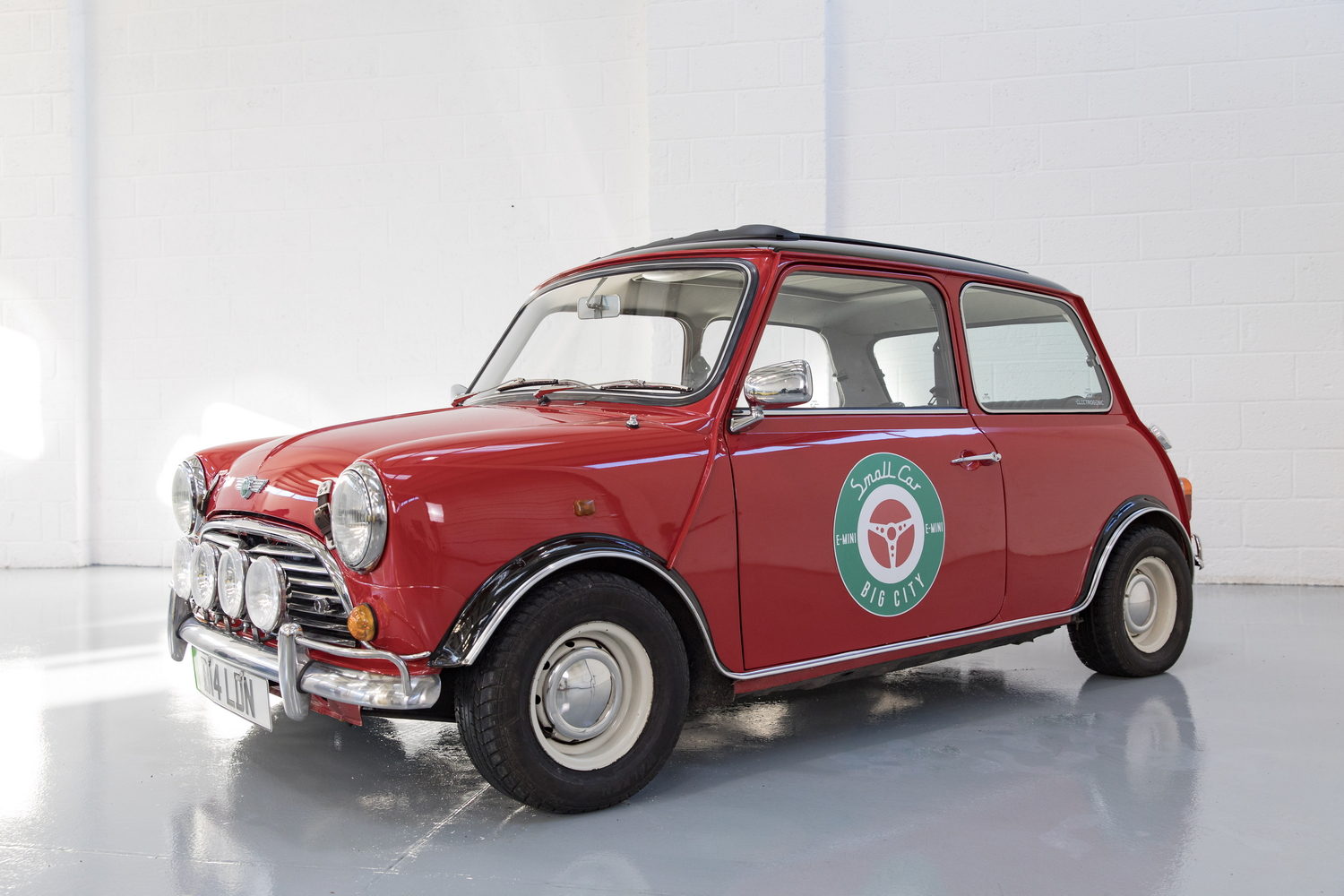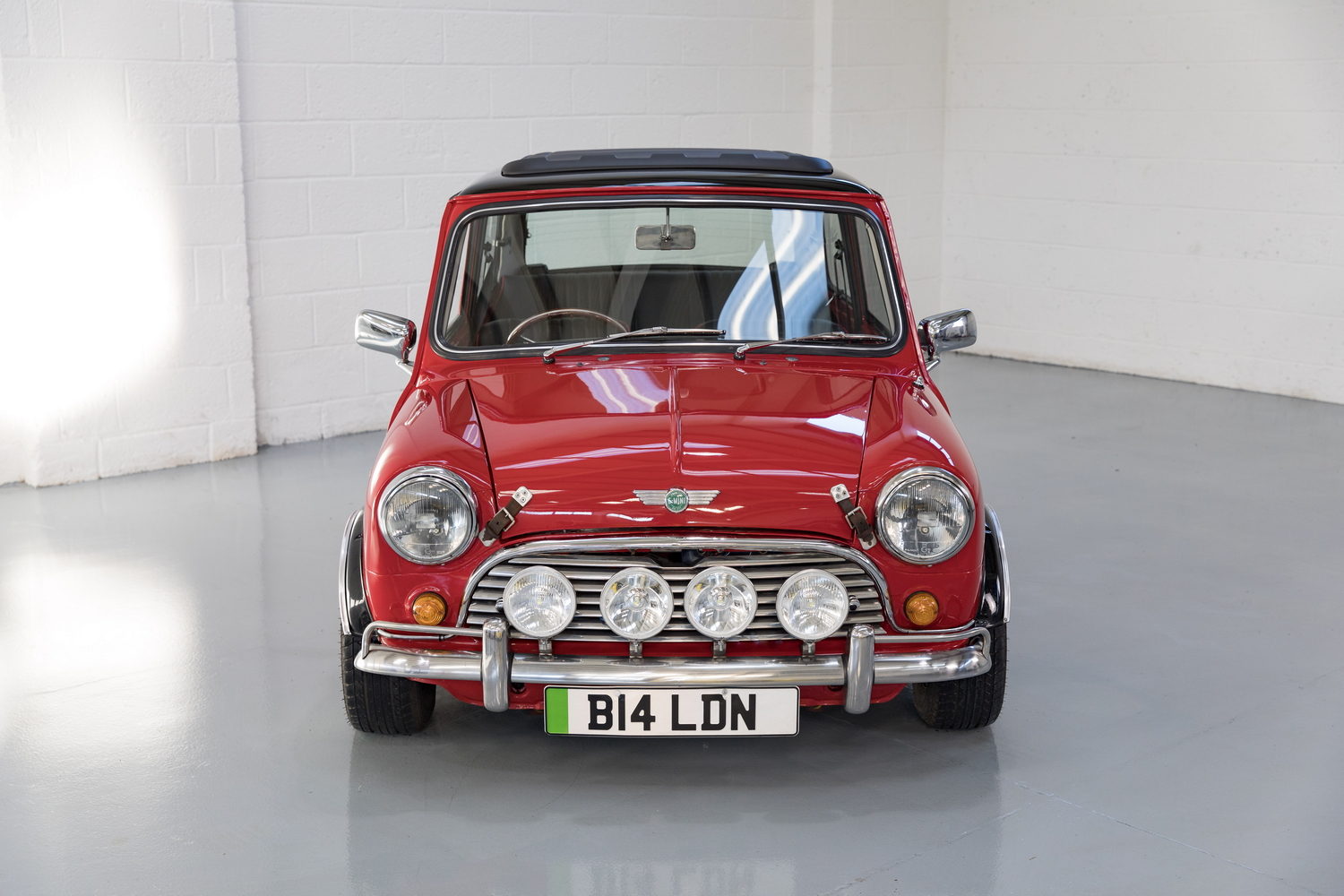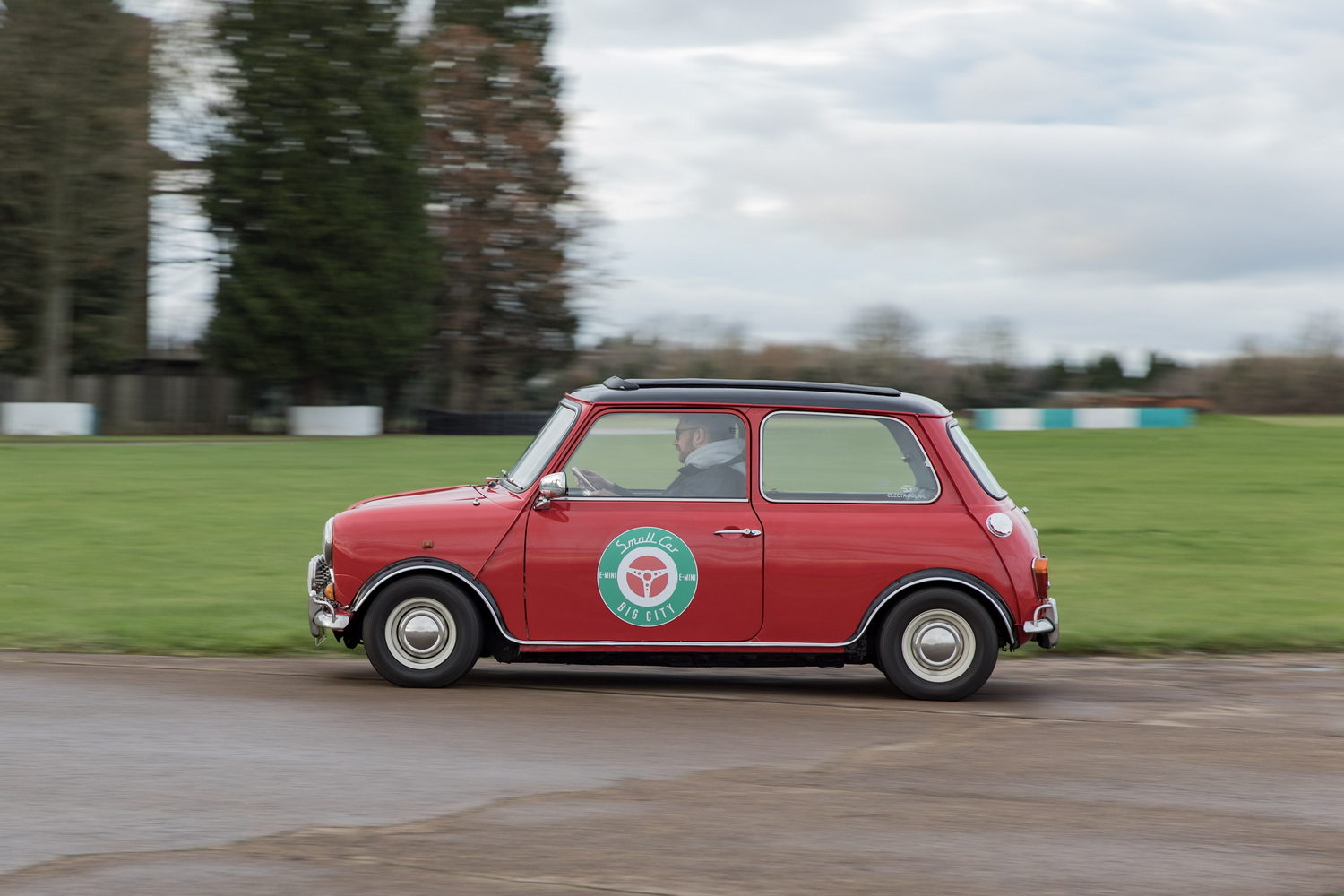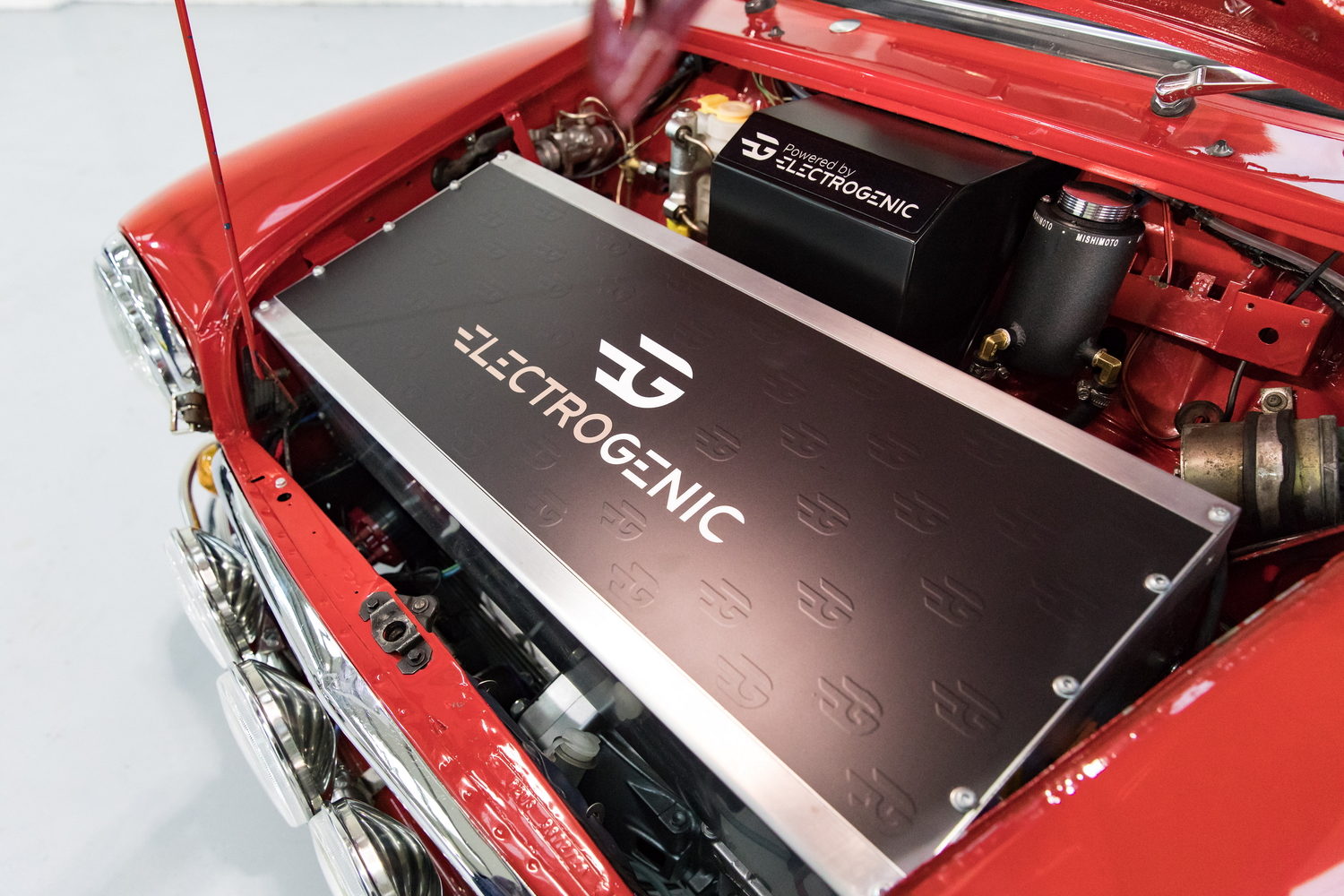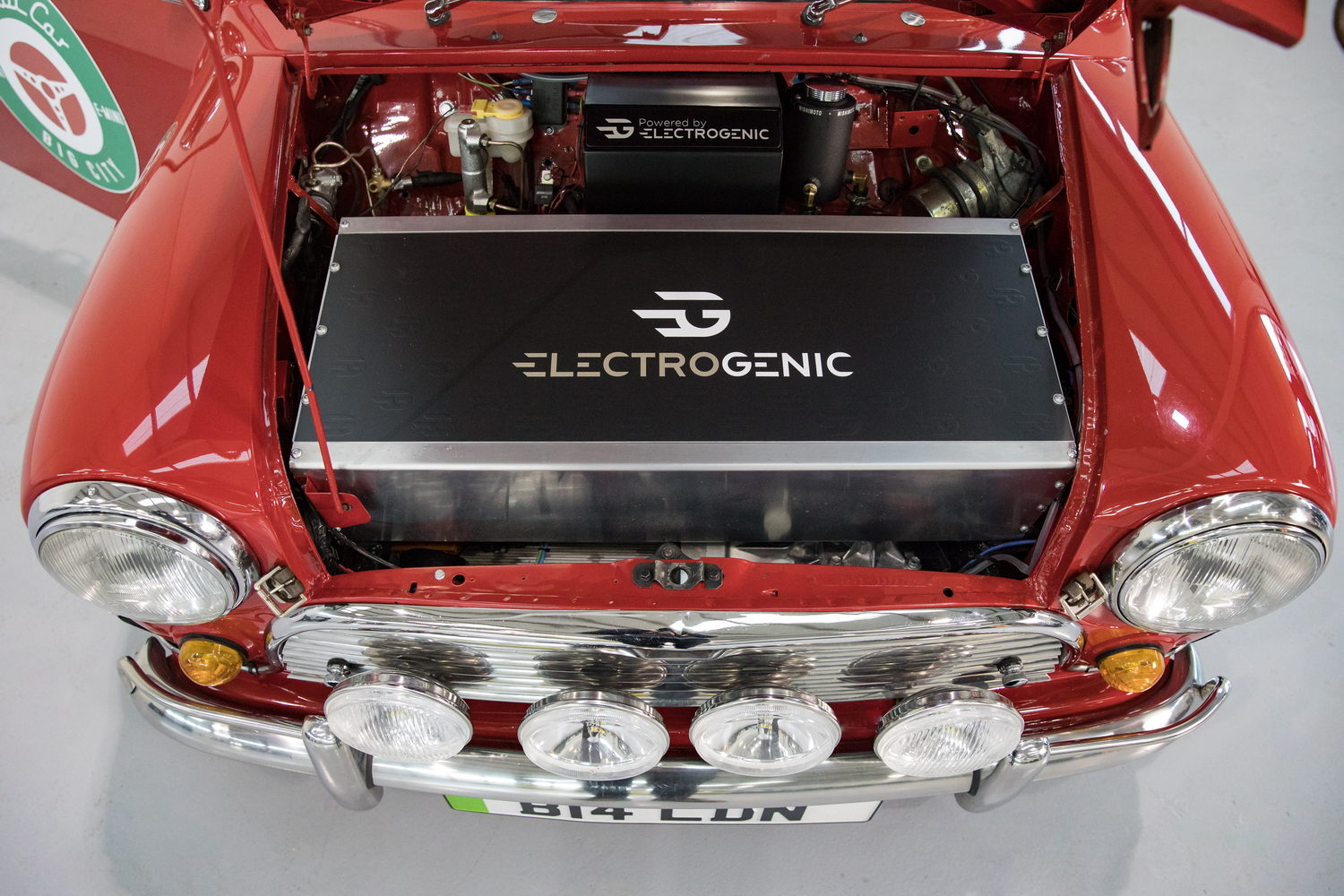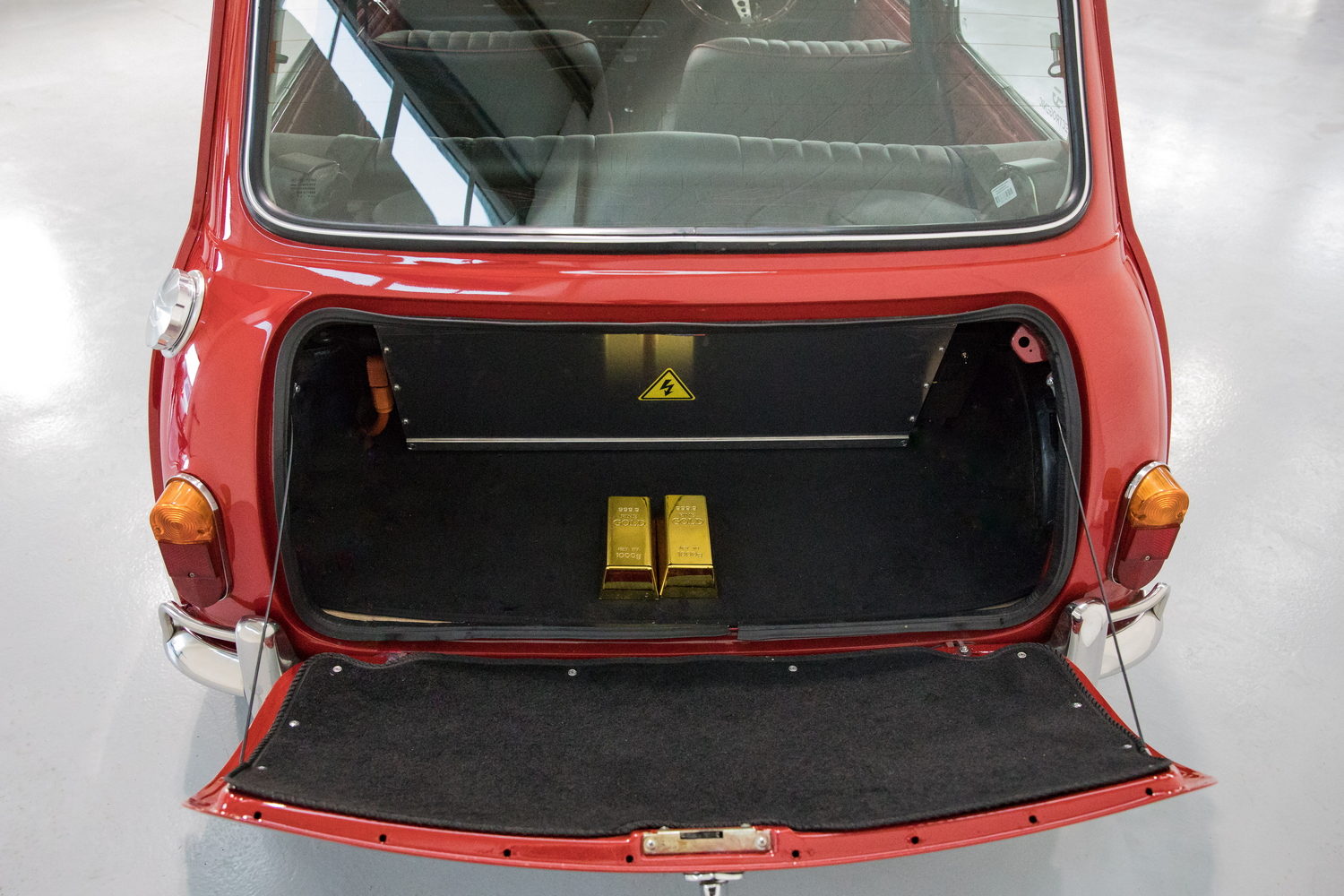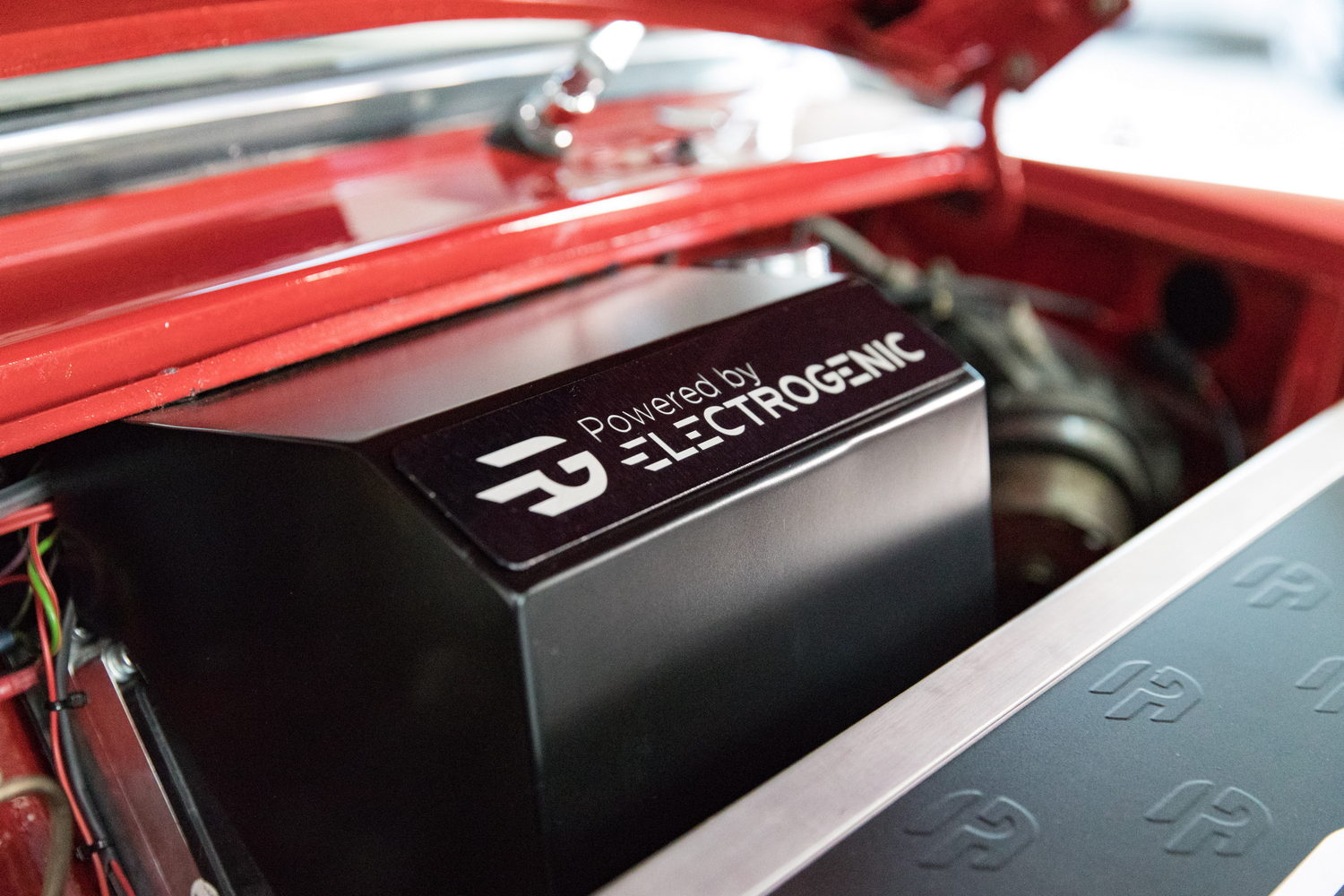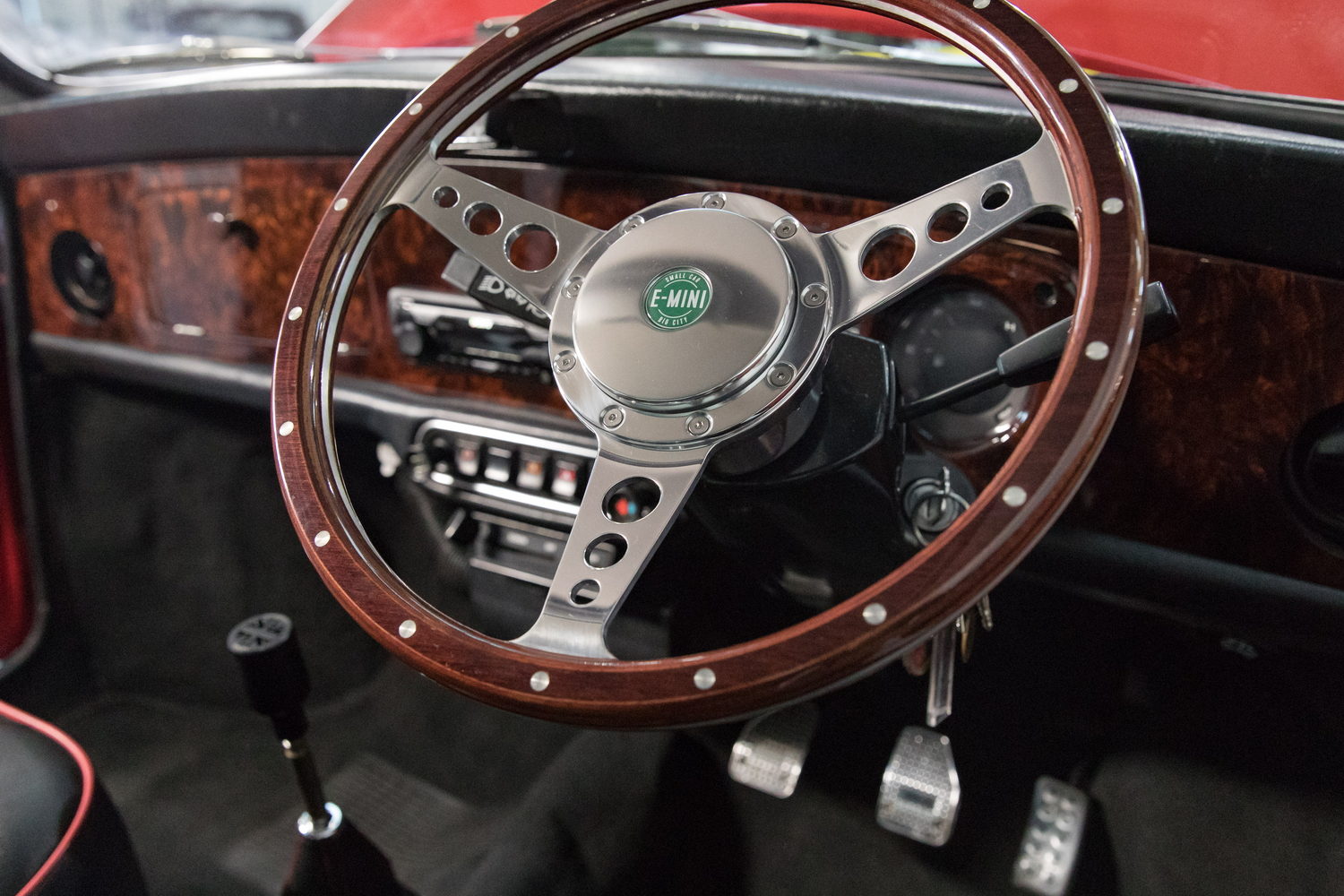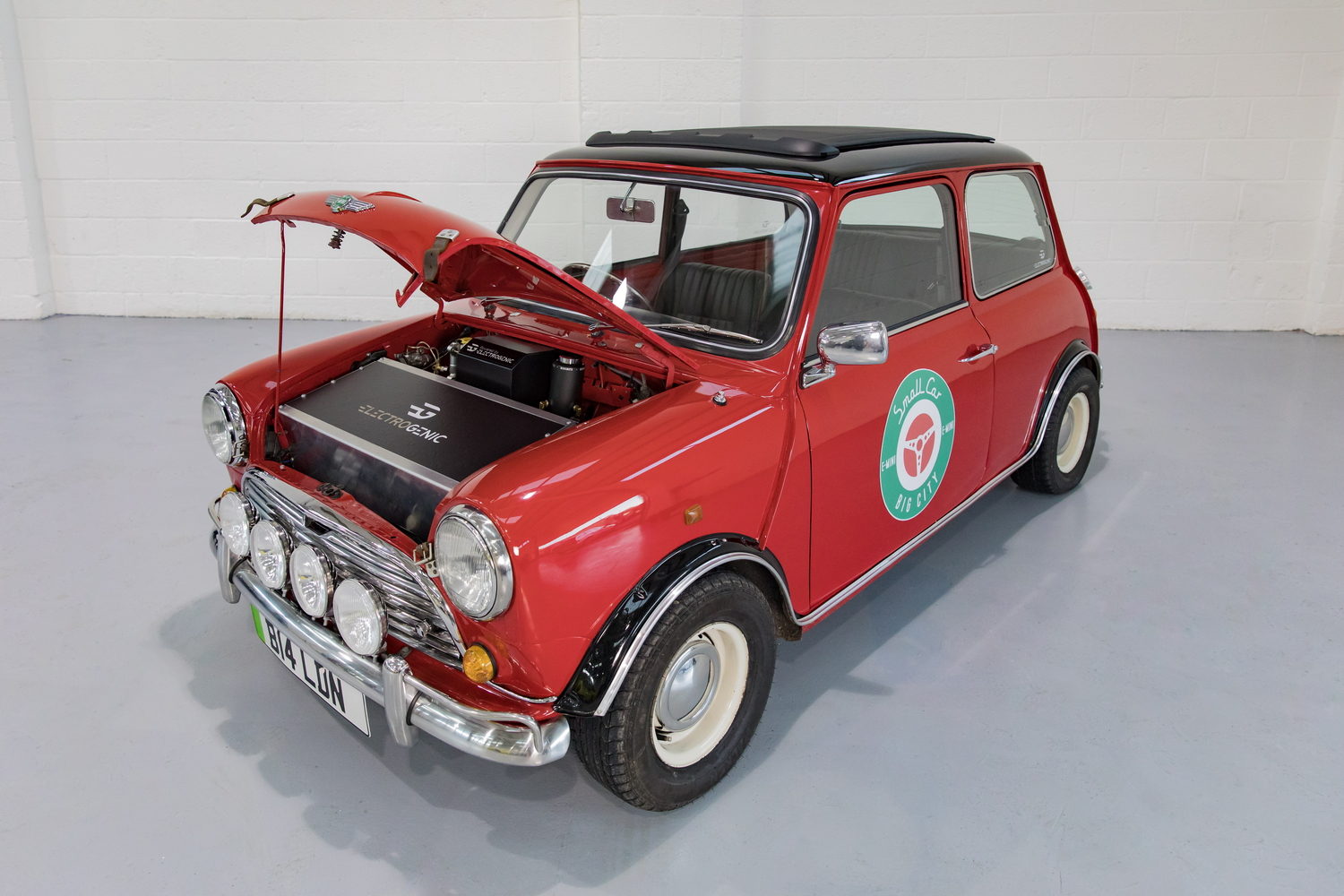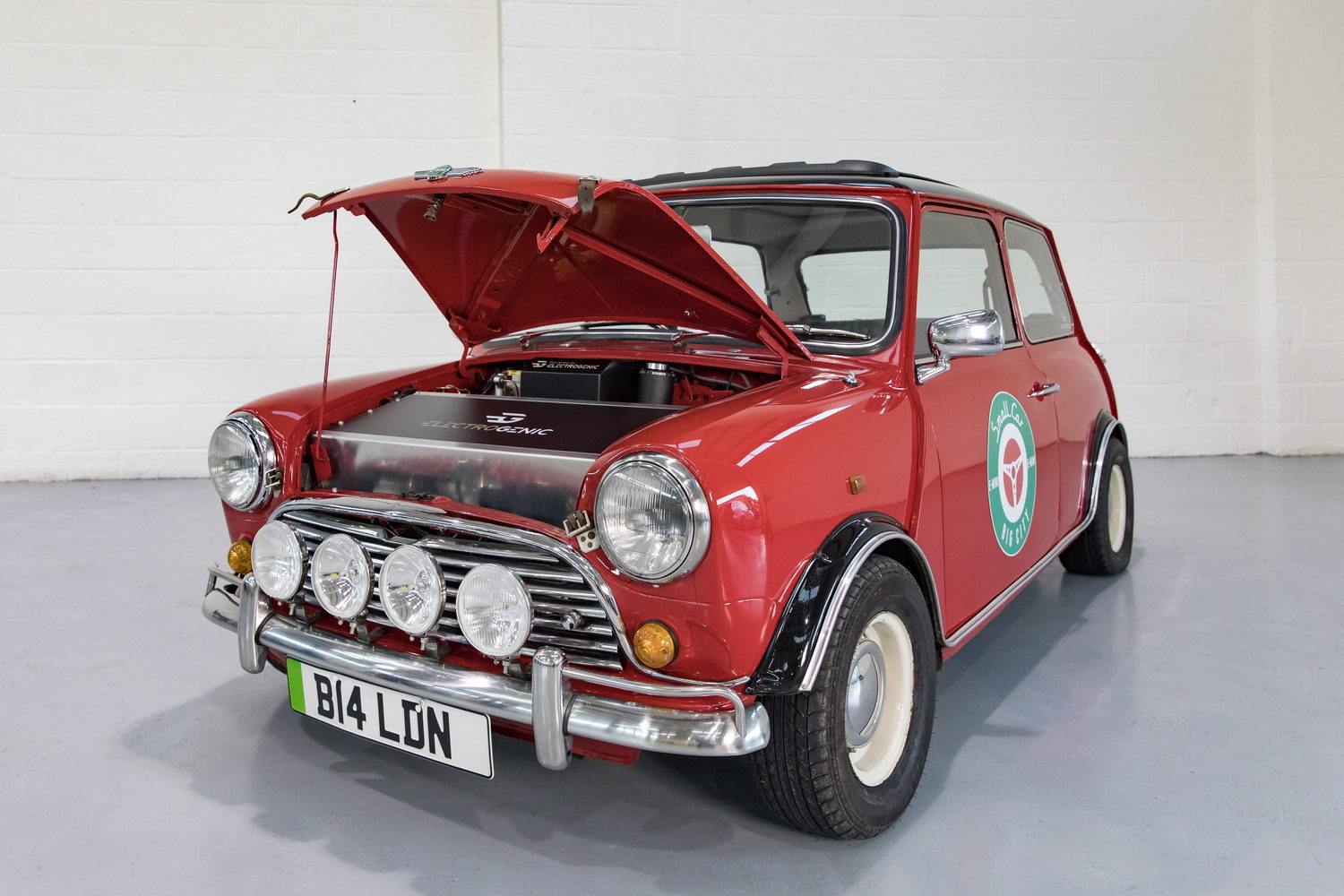The market for classic cars with electric power is only set to grow. Rising fuel prices, government legislation and increasing awareness of emissions are all playing a part in making cars such as this more appealing. It looks like an original Mini, and indeed it is an original Mini, but with one significant difference. Instead of a rattly old four-cylinder petrol engine under that stubby bonnet, there's a smooth, quiet electric motor. Created by a British company called Electrogenic, it's one of a number of commissions that see pre-1990s cars fitted with electric power. We went to see whether the conversion makes sense.
In the metal
Electrogenic, the company behind this creation, has quite the back catalogue. As well as this Mini, the company has built an electric Rolls-Royce Silver Shadow, an electric Volkswagen Beetle and even an electric Hudson Commodore. But the Mini is arguably the most iconic of the bunch, and this particular car has a job to do.
Affectionately named Rosie, it was built for Small Car Big City, a company in London that rents cars out for tours, either with or without a chauffeur. For that reason, it needed to meet a lot of legal requirements to which customer cars may not have to adhere.
Externally, it looks just like any other Mini of its era, with pretty much original features everywhere. Even the fuel filler cap remains, although it's now hiding a Type 2 charging connector. And the modifications are sympathetic, with leather buckles to hold the bonnet down (a handy safety net alongside the usual latch) and lots of extra lights on the front grille. This particular car also has some big stickers displaying its affiliation with Small Car Big City, but that's the only major difference.
As a result of this attitude to preservation, anyone who has ever driven, or even been driven in, an original Mini will feel right at home inside the Electrogenic car. As with the exterior, the company has tried to keep as many original features as possible, so all that has really changed is the new engine and gearbox. The original dials have been maintained, with the fuel gauge repurposed to show the battery level, while this particular example's dashboard is trimmed in some lovely burr walnut.
Fuel gauge aside, the majority of the electric powertrain technology is hidden under the bonnet, with the motor and a battery pack wedged in the engine bay. It's a much tidier sight than the original engine, and much cleaner than most. All you can really see is a massive slab of battery packaging with the Electrogenic logo.
Open the boot and you'll find another rack of batteries hiding behind the rear seats. Electrogenic has kept them out of the passenger compartment for safety reasons, but fitting them in the boot has reduced luggage space. Electrogenic doesn't say how much smaller the boot is as a result, but we estimate it's cut capacity by about a third. And that's just for this car. Those who want more range from their Mini can fill the boot entirely and even remove the rear seats to make way for batteries.
As a practical proposition, therefore, the Electrogenic conversion has its issues. But the brand-new electric motor is likely to be more reliable than a clapped-out old petrol engine, so that might be worth bearing in mind if you want to use the car regularly.
Driving it
To meet the rules put in place by the British government and Transport for London, the car's electric motor, which would normally produce around 120hp, has been dialled back to more closely match the original car's 52hp petrol engine. But you can order the full 120hp version that makes the Electrogenic car "really fast".
That's teamed with a lightly modified version of the five-speed manual gearbox from a Citroen C1, providing a slightly more modern experience than the original manual. Manual gearboxes are a bit of an oddity in an electric car, but the combination works surprisingly well, if a little differently to a car powered by exploding petrol.
Setting off doesn't require use of the clutch, although we found the natural instinct kicked in and we found ourselves doing it anyway. With a little practice, you'll get used to popping the car into gear, then just using the accelerator to move away. From there, it's all distinctly familiar - you even need to match the motor revolutions to the road speed when changing down - and the car eventually begins to feel much like any other Mini.
Except, of course, there's none of the rattle or smell that comes with driving an old car, and there's certainly much less noise. The electric motor isn't quite silent, chipping in with a constant underlying whine, but it's much quieter than a little in-line four-cylinder petrol engine. But because Electrogenic hasn't done much other than fitting an electric motor, the driving experience is otherwise identical.
The ride is predictably firm, with so much weight and such a short wheelbase, while the soundproofing is almost non-existent. Electrogenic has worked hard to make the car as safe as possible in terms of batteries, which are as far from the driver as possible, but the crash protection properties of a Mk3 Mini are, shall we say, not as bountiful as those of a modern MINI Hatch. But that's nothing to do with the electric powertrain and everything to do with engineering that's more than half a century old, so we can't really hold it against the Electrogenic car.
The work Electrogenic has done seems impressive, with a surprising alacrity to the way in which the car can accelerate. Although it's designed to mimic the original engine, the electric motor definitely makes the Mini feel quite sprightly. The handling is a little less impressive, with some of the original's agility going west with the petrol engine, but it's still a great little car to drive. The steering is predictably heavy, but it's manageable in town. After all, the dimensions haven't changed.
What you get for your money
The Electrogenic conversions are more or less bespoke, so it's difficult to put a price on the switch, but converting a Mini to the specification of the car we drove cost more than £30,000 (around €36,000), which makes it more expensive than a Nissan Leaf. And that's before you include the cost of the car.
Electrogenic doesn't do any real restoration work of its own (although it has contacts who can do the work for a price), but it mostly deals with clean vehicles to begin with. However, the company will help customers find vehicles that it is happy to work on. Depending on what you want or need to do to your car, it could get very expensive.
Summary
The switch to electric undoubtedly makes the Mini smoother and cleaner, and there's no denying its ease of use. Crucially, the vital Mini image is untouched, and that's what matters to most customers. Unless you pop the bonnet or catch it charging, there's nothing to suggest the Electrogenic car is anything other than an original Mini.
However, the conversion doesn't come cheap, and many would say the internal combustion engine is a key part of the Mini's character. We would tend to agree, and we'd probably spend the money on a few sympathetic upgrades to make a petrol-powered Mini more user-friendly, but if electric is your thing, the Electrogenic conversion is well worth a look.

